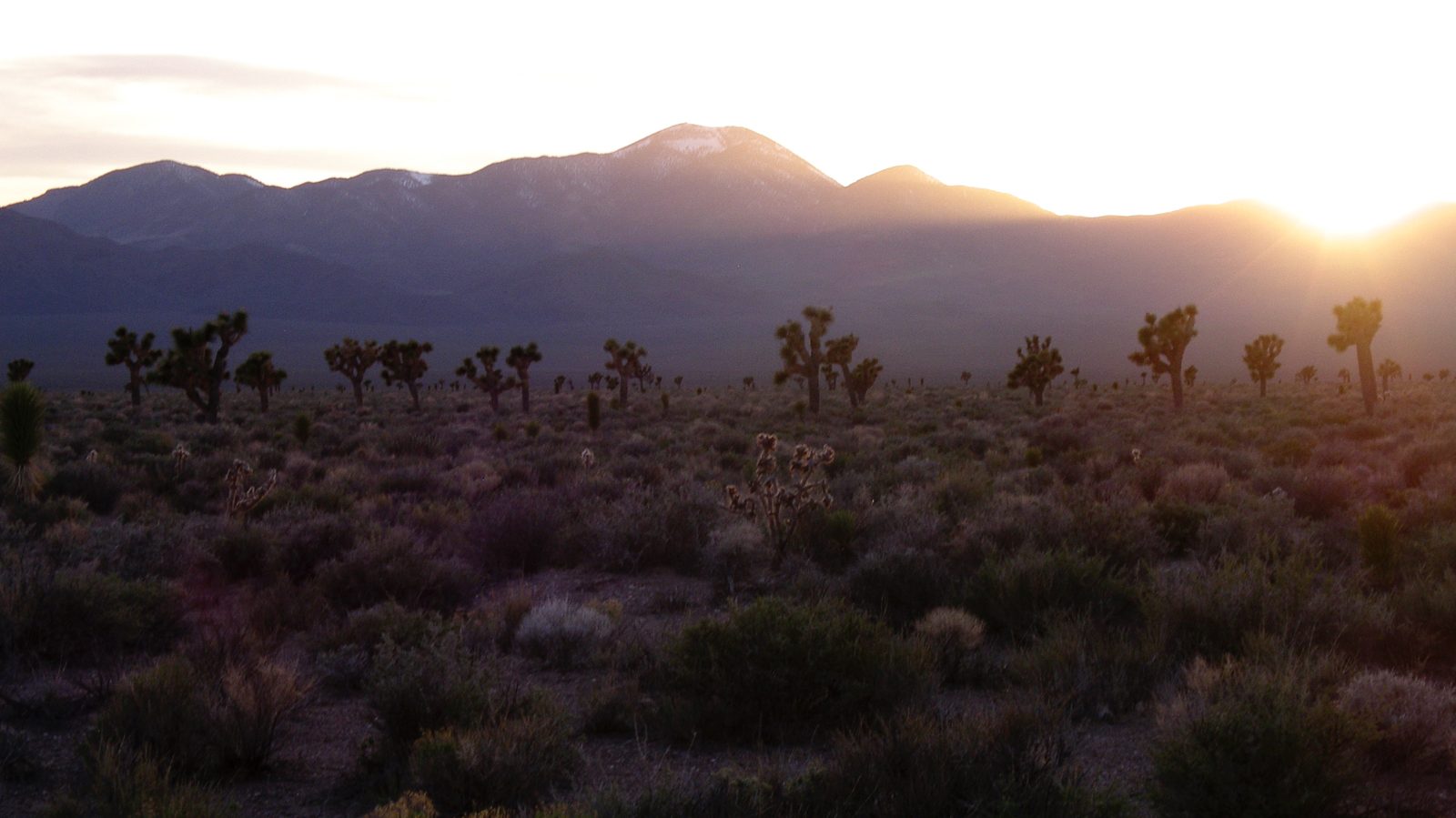An uncommon “common garden”

Spring in the desert means it’s time to plant Joshua trees. Over the past two weeks, Joshua Tree Genome Project collaborators and US Geological Survey staff led by Lesley DeFalco planted thousands of Joshua tree seedlings in gardens spaced across the Mojave Desert. The seedlings were started in greenhouse conditions last year, from seeds collected in Joshua tree populations growing in different climates across the desert. Seedling Joshua trees are delicate, and we start them gently — first the greenhouse, then planting with tilled soil and generous watering, then months of monitoring and more water, to let them put down roots.



A garden crew member digs rows of holes for planting the seedlings using a power auger, which makes quick work of the desert soil. 

But eventually we’ll step back and let the seedlings face the full stress of the different parts of the Mojave where the gardens are planted. It seems mean, but it’s a gold-standard experimental method to understand a key question that will help us protect the species as climate change ratchets up the heat and drought stress across the desert.
The “common garden” method is used by geneticists to understand the genetic basis of species’ traits. Common gardens like the ones hosting our seedlings allow scientists to study the ‘nature vs nurture’ question – to see directly what differences between individuals (be they humans, fruit flies, or Joshua trees) are caused by differences in their genes, or differences in the environment. Growing seeds collected from plants that occur in different environments together in one place, so the environmental conditions experienced by each plant are as similar as possible, means that any remaining differences between them should be due to genetic differences.

Consider a plant that grows in a range of different environments — both on the upper slopes of a mountain and down in the valley below. A geneticist observes that the mountain-top plants grow smaller than the plants in the valley, and notes that small plants might be adapted to weather the colder, drier climate at high altitude. But it could also be that the cold, dry climate makes the plants grow that way! Just comparing plants grown in the contrasting environments, it’s not possible to differentiate between the effects of genetic variation, and the effects of the different environments.
The solution is to collect seeds from the high and low populations and compare their growth in the same environment. If the high-elevation seeds grow into small, hardy plants when they’re raised alongside plants from low elevation that grow into bigger, less tough plants, then we could infer that their differences in nature are heritable, due to genetic differences between the original populations. If the plants from different elevations grow similarly in the common garden, the originally observed differences are much more likely to be due to their different environments.
That’s the simplest possible scenario, and it skips past some complicating factors. For instance, differences measured in a common garden aren’t definitively genetic. In plants, especially, we can see what are called “maternal effects,” in which environmental conditions experienced by a parent plant influence the growth and development of their seeds even without genetic inheritance — one reason for this is that plants provide their seeds with resources to support seedlings’ early growth, and parent plants that grow in rich, comfortable conditions can put more resources in each seed. We can test for this and control for it in our analysis, by weighing seeds before we plant them, and tracking seedlings’ early growth before we leave them to fend for themselves in the common garden.
Another wrinkle is that we may be interested in how our favorite plant species grows in different environments — we might not plant one common garden at an intermediate elevation, but two gardens, one at high elevation and one down in the valley. Then we can test for what we call local adaptation, in which the local population of a plant fares better in its home environment than populations from other environments do. That’s part of our reasoning for planting four gardens in different parts of the Mojave, to better reflect the range of conditions that Joshua trees call home.
Finally, tantalizingly: With a reference genome and the right DNA sequence data from our garden-raised seedlings, we can learn more than just whether or not differences between Joshua tree populations have a genetic basis. We can identify individual genes that may create those differences. There’s a lot of work to do before we get to that point, but we’ve also made some exciting progress towards it in the last year.
Watch this space — sign up for our email updates on the right-hand side of the blog, or follow us on Twitter — to see what scientific fruit this spring’s planting will bear.

You must be logged in to post a comment.